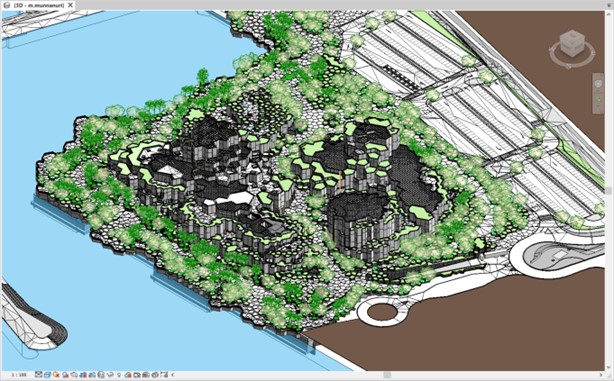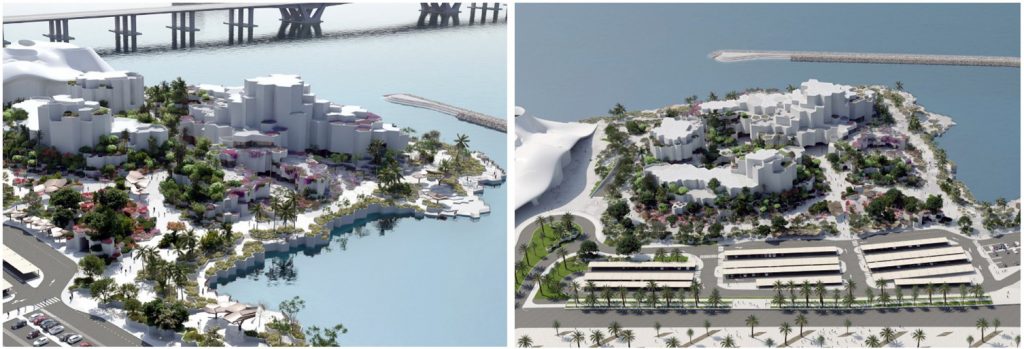AUTHOR: Ar Manikanta Munnanuri
TUTORS: Ing. Giovanni Franchi
INTERNSHIP: WME Consultants India Pvt Ltd
MASTER: Master in BIM Manager a.a 2022/23
Building Information Modelling (BIM) is a revolutionary approach that has transformed the Architecture, Engineering, Construction, and Operations (AECO) industry. It represents a paradigm shift from traditional 2D design and drafting to a digital, data-driven method of designing, constructing, and managing buildings and infrastructure. BIM is a comprehensive digital representation of a building or infrastructure project. It involves creating a 3D model of the project, which encompasses its physical components and functional characteristics, including geometry, materials, spatial relationships, and data associated with each element.
BIM is a holistic approach that revolutionizes the AECO industry by providing a digital platform for creating, managing, and analysing building and infrastructure projects. It enhances collaboration, reduces errors, and improves decision-making, ultimately leading to more efficient, cost-effective, and sustainable projects throughout their entire lifecycle.
My thesis covers the quality of a Building Information Model (BIM) during the design stage of a Project is critical to ensure that the final deliverables meet the employer’s needs and expectations. A high-quality BIM-based model can be used to ameliorate communication, coordination, and collaboration among project collaborators, as well as to simulate and analyse the building’s performance accurately.
Automated Quality Control (AQC) of Building Information Models (BIM) can be utilised to ensure that the models conform to standard project protocols and guidelines. The AQC process can be implemented using software that checks the BIM model for compliance with the Building Execution Plan (BEP), which outlines the BIM protocols for a specific project. In the case of a residential building, the AQC process can check for compliance with the Architectural, Structural, Mechanical, Electrical, and Plumbing (ASMEP) disciplines. The AQC process can check for issues such as missing or incorrect data, incorrect geometry, and conflicts between different disciplines. The outcome of AQC is a report that highlights any issues found in the model, which can then be corrected by the project collaborators. This will ensure that the BIM model meets the required standard and that the building will be constructed as per the design intent.
During my internship with WME Consultants in Bangalore, I held the role of BIM Coordinator for the Middle East projects, with a primary focus on the “Natural History Museum” project situated on Saadiyat Island, Abu Dhabi, UAE. In my capacity as the Lead Design Consultant (LDC) BIM Coordinator for this project, I was responsible for ensuring the alignment of all sub-consultant BIM models with the prescribed BIM Execution Plan (BEP) and Project BIM Protocols, including MIDP/TIDP, the standard Project QA/QC checklist, and any pertinent appendices.
A significant aspect of my role involved weekly quality assurance and quality control (QA/QC) checks on approximately 25 sub-consultant BIM models under the LDC’s purview. Traditionally, these reviews required substantial manual effort, typically taking forty-five minutes to an hour for each model, resulting in a two-man-day effort every week. Recognizing an opportunity for process improvement, I sought to automate certain aspects of the QA/QC checklist.
Leveraging the power of Dynamo, I developed a script that systematically verified elements within the BIM models. The extracted data was cross-referenced with the project’s BIM Protocols (MIDP/TIDP), the standard Project QA/QC checklist, and any relevant appendices using Microsoft Excel. This automation significantly expedited the QA/QC process, enhancing efficiency and accuracy i maintaining compliance with project guidelines.
In conclusion, prior to implementing the prescribed workflow, the QA/QC process for sub-consultant BIM models demanded a substantial 2-man day effort, equivalent to 18 hours of work each week.
Considering the scale and duration of a typical project of this magnitude, spanning approximately 9 months or 36 weeks, the implications of this transformation are profound. By harnessing the capabilities of the Dynamo script, I’ve effectively slashed the QA/QC time from an initial 648 hours (equivalent to 72 man days) to a streamlined 108 hours (or 12 man days). This incredible advancement has made the QA/QC process a staggering 83.3% more efficient, reflecting not only substantial time savings but also enhanced precision and productivity.


